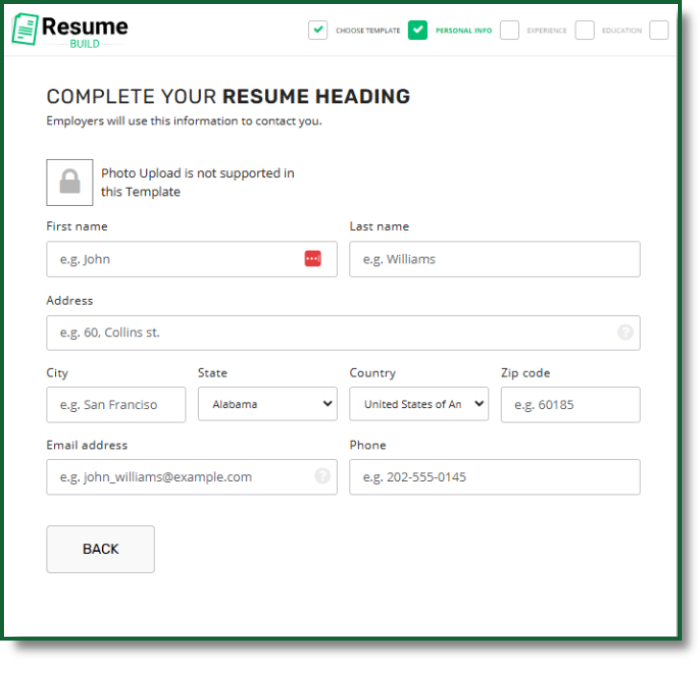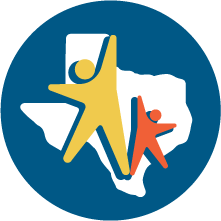
Student Resources
Welcome to the Student Resources page. Wherever you are in your journey, whether it be getting through high school, researching colleges or trade schools, or jumping head first into your career, we aim to ensure that you have all the tools required to achieve success.
This is a recommended schedule as you prepare for college. It includes suggested meetings and activities, when to visit colleges and take exams, etc. Please review it to ensure you are taking the steps necessary to ensure your success in the process.
| Grade | Fall | Winter | Spring | Summer |
|---|---|---|---|---|
| 9th-10th | Meet with your school counselor about classes to take to prepare for college | Get involved in clubs, sports, or volunteering Make connections with teachers, coaches, and counselors |
Take the PSAT and begin recording your accomplishments | Learn about colleges with programs that might interest you |
| 11th | Take the ASVAB test to explore career interests Create a resume for scholarships or to help teachers/coaches to write recommendation letters |
Research scholarships that you could qualify for Reach out for recommendation letters from club leaders or teachers |
Visit local colleges of interest Research summer work, internships, and volunteer work |
Take the SAT or ACT Visit colleges of interest Build experience through summer work or volunteer experiences |
| 12th | Continue college visits Begin college applications Apply for scholarships (outside of universities) Prepare FAFSA / TASFA Take the ACT or SAT to improve score |
Verify that colleges received applications, transcripts, test scores, and
letters of recommendation Submit FAFSA / TASFA *Each college has their own deadlines for financial aid |
Review Financial aid report (one month after submission)
Receive admission decisions and review financial aid available at each college Make final college decision Inform colleges that you won’t attend |
Send final high school transcript, if required Prepare for living near campus, if applicable |
For a more in depth look at the timeline to prepare for college, refer to the College Planning Timelinefrom MyFuture.com.
Choosing a Field of Study
While you do not have to choose a major before you graduate high school, it might be helpful to narrow down your interests to a field so that you can choose a college that might specialize in that field.
To learn about what various fields and jobs might fit your interest as well as the financial expectations of those careers, check out the links below.
Common Jobs for Majors
Different degrees and common jobs for various majors.
Armed Services
Vocational Aptitude Battery (ASVAB)
Test designed to find what careers would suit you best.
U.S. Bureau of Labor
Statistics - Occupation Finder
Compare salaries based on education, experience, and occupation.
Texas Reality Check is a "lifestyle calculator" that will help you figure out the minimum amount of salary you need based on your lifestyle. You can then use the occupation calculator to figure out if your desired career can cover your expenses.
Necessary Documents
When preparing for college, make sure to collect the documents below.
- Immunization Record
Collect this record from your pediatrician. You can also collect a copy of this from your school. Additionally, it is possible that your immunizations were reported to the ImmTrac2 Texas Immunization Registry if your parent or guardian “opted-in” to the program. - High School Transcript
Your high school will have a copy of your transcript. It would be wise to keep a copy for your records. - Resume
Keep a digital copy of your resume available for submission to colleges or scholarship opportunities. You might develop two resumes - one for scholarships and one for employment since you will need to highlight different aspects of your experience and skills. - Recommendation Letters
Asking teachers and mentors for recommendation letters is a vital step when applying for colleges and scholarships. Often times, letters are sent directly to the university or scholarship committee; however, keeping a copy for your records or for later use (with permission from the person who wrote the recommendation) is useful when other opportunities arise. - SAT/ACT Scores (If Applicable)
When you take the ACT or SAT, you can choose to have your scores sent directly to colleges or universities that you are interested in. Always keep a copy for your records in case you need to submit the scores elsewhere.
Texas Application for State Financial Aid (TASFA)
TASFA is for students with residency within Texas regardless of immigration status. Be sure to read the instructions within the application (linked below). The deadline for submission is January 15th for the following school year.
- Must be a student seeking financial assistance who is NOT for federal
student aid AND meets the requirements of residency from House Bill 1403:
Student
- Resided in Texas with a parent or guardian while attending high school
- Graduated from a public or private high school or received a GED in Texas
- Resided in Texas for three years leading up to graduation or receipt of a GED, and
- Provided their institutions a signed affidavit indicating an intent to apply for permanent resident status as soon as able to do so.
- Fill out the application
- Submit directly to university/college where planning to attend
- Include income documentation (e.g., tax returns and W-2 forms for both student and parent(s)/guardian(s), if student is a dependent).
- The institution then will conduct a needs analysis to determine any financial aid to be provided.
Free Application for Federal Student Aid (FAFSA)
FAFSA is for any student considering college or career school. The deadline for submission is June 30th for the following school year, but certain colleges might have an earlier deadline. Corrections must be submitted in September. You might need to use your parents’ financial information, but review the requirements to submit the form as an independent student which often grants more financial aid.
- Student and parent (if student is a dependent) will need to create FSA (Federal Student Aid) accounts at studentaid.gov.
- Log in to fafsa.gov and
begin filling out the FAFSA form.
- TIP- if you have previously filled out a FAFSA, make sure to RENEW your previous FAFSA so your demographic information rolls over to the new application.
- Fill out the Student Demographic section
- List the schools to send your FAFSA to (up to 10 at a time).
- Answer the dependency status questions to determine what financial documentation you will need to submit.
- Fill out the Parent Demographics section, if you are a dependent student.
- Supply your financial information
- Utilize the IRS Data Retrieval Tool by clicking the “Link to IRS button” to import your IRS information into the FAFSA form.
- Sign and submit your FAFSA form
Be sure to contact your school’s financial aid office to determine if there is any additional paperwork that needs to be submitted to potentially reward financial aid.
Trade school is a great option for those students who are interested building skills and entering the workforce more quickly and with less debt.
Just like attending college, you will need to fill out a FAFSA form and can apply for scholarships or grants to help you pay for your certification. Keep in mind that some programs allow for you to have an apprenticeship which will allow you to earn money while also gaining experience.
Review some of the more popular trade school programs below, but note that you can also pursue associate or bachelor’s degrees in these fields as well.
Trade School Programs
- HVAC Technology
- Auto Mechanic
- Welding
- Electrical Technology
- Aircraft Maintenance
- Medical Assistant
- Dental Assistant
- Pharmacy Technician
- Medical Coding
- Medical Billing
- Healthcare Administration
- Healthcare Information
A list of accredited trade school programs which offer financial assistance can be found on the
Top Trade School website.

Qualifications
- High school diploma or GED
- At least 16 years of age
- Some programs require you to be over the age of 18 - Pass the trade school’s entrance exam
- At times, the SAT or ACT is used in place of an entrance exam
Necessary Documents
- Trade school application
- High school transcript or GED certificate
- ACT or SAT scores
- Letters of recommendation
Building a resume when preparing for college will get you ready to apply for scholarships, grants, research opportunities, and much more. As a student looking for educational opportunities, your resume will differ from someone who is out in the workforce. It is important to include your work experience, but be sure to highlight your educational achievements and leadership experience.
Resume Build
Need a resume but don’t know where to start? Recommended items to include on your resume:
- Leadership positions (e.g. secretary of Spanish club)
- Awards received
- Volunteer hours
- Work experience
- Skills/Certifications
- Extracurricular activities
- Portfolio (if applicable)
- Keep your resume short and to the point
- Use a resume template that fits your experience
- Use strong action verbs to make your resume more dynamic
- Highlight relevant skills and experiences by tailoring your resume to mirror the job description that you are applying to
- Create social media profiles for your academic/work experience and link them in your resume
- Ask someone to edit your resume to find any and all errors
Resume Formats

Try resumebuild.com to begin creating your professional resume. Start by choosing a template and then enter all of your information. Make sure to stay concise and communicate your strengths.

For a variety of fun and colorful options check out the Canva high school resume options. Keep in mind that many of the templates might not be appropriate for certain scholarships, jobs, or college applications

If you would like a more standard resume with a little bit of flair, check out Adobe free high school resume templates.
When thinking about applying for scholarships, know that there are scholarships for everyone! Scholarships can vary in every way possible - what they can be used for, who can apply, when to apply, and how to apply. There are scholarships based on field of study, ethnicity, gender, birth place, age, and many other characteristics. Some of them are merit based (grades, test scores, accomplishments) and some are based strictly on financial need.
Review the links below to search for a scholarship that fits your experiences and background.
Difference Between Scholarships and Grants
Grants are based on financial-need while scholarships are typically based on merit for achievements in academics, extracurricular activities, fields of study, etc. Neither need to be repaid. Access this PDF from Federal Student Aid to learn more about different grants, their program details and the typical annual award they provide.
Scholarships, Financial Aid and Federal Programs
Visit comptroller.texas.govto access an alphabetized list of scholarships, financial aid and federal programs that could provide students assistance in paying for their education. Path to Scholarships (PDF) is a step-by-step guide on the college and scholarship process.
Fastweb.com is a platform built to serve students in search of financial aid. Simply create a profile and get matched with scholarships tailored to you. Additionally, there’s guidance for student loans, FAFSA, internships, and much more!
Writing a Scholarship Essay
When it comes to writing an essay for a scholarship, the pressure is on. Read this article by Forbes to learn some pointers about making the most of this opportunity.
Scholarship Essay "Dos"
Scholarship Essay "Don'ts"
Scholarships
Association for Women Geoscientists Minority Scholarship
Scholarship information for students (adopted/foster, bilingual, homeless/formerly homeless, refugee/immigrant, and others).
CollegeBoard Opportunity Scholarships
Complete college planning steps for chances at $500 scholarships.
Doug Miller and Don Sanders Scholarship
This four year tuition and living expense scholarship is for high achieving students from disadvantaged backgrounds.
Get Schooled
Scholarship information for immigrant students.
QuestBridge College Prep Scholars
Apply as a high school junior to gain access to summer programs, conferences, college essay feedback, campus visits, and scholarships for technology or other resources. Based on academic ability & need.
Scholarships
Scholarship information for students with a variety of classifications. (adopted/fostered, bilingual, homeless/formerly homeless, refugee/immigrant, and others).
Scholarships for Women
Scholarship information special groups (adopted/fostered, bilingual, homeless/formerly homeless, refugee/immigrant, and others).
Stamps Foundation
This scholarship is to fund scholars of all backgrounds and areas of student in pursuit of education opportunities such as study abroad, academic conferences, leadership training, etc.
TexasExes Scholarships
Apply as a continuing or transferring college student to scholarships based on merit, need, interests, and commonalities to the many alumni and donor groups.

